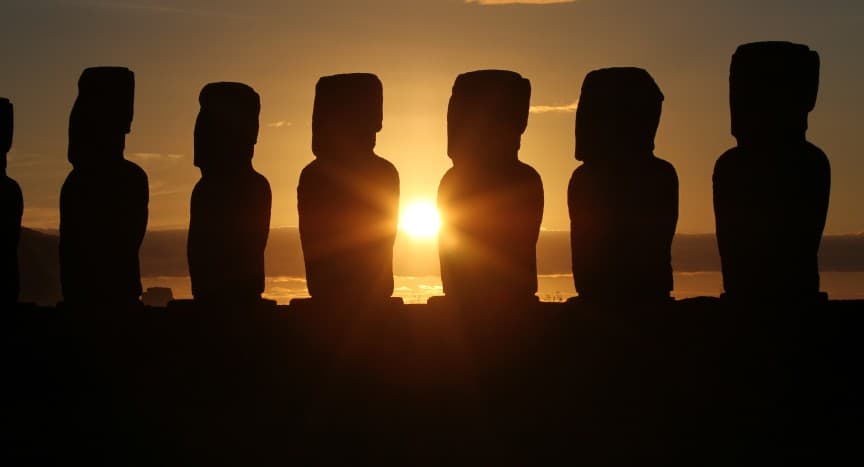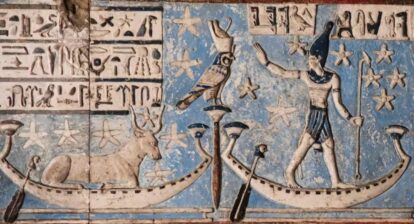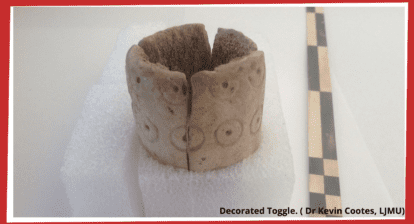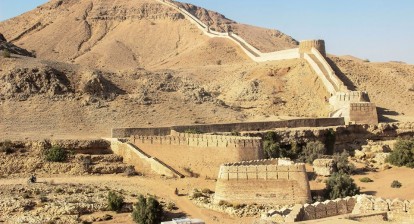Rapa Nui is a remote patch of land many thousands of kilometres away from the coast of South America, in the middle of the South Pacific Ocean. Commonly known as Easter Island, it has been inordinately famous for the nearly one thousand large statues that dot its landscape. The Rapa Nui people are the ones who sculpted these large heads and torsos called moai.
Although it is now a Chilean territory, Polynesian people are thought to have arrived at the island in around 1200 AD – one of the last islands to be inhabited by these inveterate ocean-goers, although some researchers say it was as early as 800 AD. It is one of the remotest inhabited islands in the world, with its closest neighbours at a distance of 1,800 km, and South America around 3,700 km away

Moai on Rapa Nui. Image by Thomas Greggs from Unsplash
For 500 years, the Rapa Nui people created and supported a thriving culture, leaving many artifacts, in addition to the moai. Because we do not have any written accounts of Rapa Nui life and culture, it is not clear for what purpose the moai were created. The general consensus among researchers is that the 4 meters tall and 14 ton head and torso figures were created to honour ancestors, chiefs and other important figures.
Europeans arrived in 1722, including James Cook in 1774. Dutch explorer Jacob Roggeveen was the first European to visit it in 1722 and was responsible for the moniker Easter Island. The island is about 24.6 km (15.3 mi) long by 12.3 km (7.6 mi) at its widest point. It was originally full of giant palm trees and probably supported a population of around 15,000 people.
Conventional thinking is that the Rapa Nui people cut down the giant palm trees to make room for agriculture, for burning as fuel, and to transport the giant moai across the Island. The disappearance of trees is thought to have led to lack of food and conflict amongst tribal groups. When the Polynesians colonized the Island, they brought with them another species: rats; as evidenced by the large number of bones being found during excavations. These rodents were also instrumental in decimating the lush palm trees by eating their seeds. The ample supply of food meant that rat populations sky-rocketed, which meant that seeds were eaten up before they could regenerate into new trees. According to the first European visitors, population of the island was just 2,000 to 3,000 people at the time of their arrival.
After the decline of the moai culture, another culture took root. It was centered around Orongo village, built on the crater of its largest volcano Rano Kao and was known as Tangata manu or the Birdman cult. It involved the ritual to collect the first sooty tern (manu tara) egg of the season from the islet of Motu Nui, swim back to Rapa Nui and climb the Rano Kao cliff to Orongo. This ritual was suppressed by Christian missionaries in the 19th century.
(Watch this VLOG on ancient Africans and how our ancestors interbred with other species)
Recently though, evidence has emerged that shows the inhabitants as sustainable farmers, who were still thriving when the Europeans arrived. Latest research, published in February 2020, has involved analyzing the platforms — called ahu — atop which the moai were placed. Using radiocarbon dating and statistics, the team has found that the construction of the statues continued well after the arrival of Europeans in 1722. According to the new timeline, the Rapa Nui people starting erecting the statues in early 14th to mid 15th centuries and continued the construction till at least 1750. It is only James Cook’s account from 1774 that tells us that the statues were in ruins at his arrival. There is no concrete account of population decline before the 18th century. The obsidian flakes or “mata’a” that littered the island; and which were interpreted as weapons used during conflicts, have been shown by new research (from 2016) to be multipurpose tools for various parts of daily life, such as food processing and cultivation. Skeletal remains also do not provide any evidence of trauma inflicted by the mata’a. And there is not enough evidence from human remains to support the major conflict theory either.
(Check out the blog on Who Are the South Asians?)
So what could have happened? The rats probably did contribute a lot the disappearance of the giant palms, in addition to clearing of land by the inhabitants themselves. But this did not result in major wars being fought among the tribes or a decimation of the population. The Rapa Nui people continued their culture up to the 18th century — when the Europeans arrived. They brought European diseases with them, which devastated the civilization. By the 1877, the population had been reduced to just 111 native inhabitants, due to disease, slavery and migration to other islands. Peruvian slave traders alone took away half the population during the 19th century. This is the time Christianity was introduced by Catholic missionaries. And finally, in 1888 Chile annexed Easter Island, using most of its land for sheep rearing. It became a special territory of Chile in 2007.
(The Ancient Stone Spheres of Costa Rica)
In July 2021, another study by Napoli et.al. provides evidence of stable and sustainable communities on the island. The scientists modeled scenarious and showed that the island experienced steady population growth until the arrival of the Europeans in 1722, after which the models differ, with two showing possible population plateau and two showing possible decline. There is also no evidence of extensive and catastrophic palm tree use and even the construction of the moai continued.
The Rapa Nui people eventually recovered and passed on a lot of their culture to modern descendants, through language, arts and practices. Wooden tablets have been found on the island, with their own system of writing known as rongorongo, as yet undeciphered. Easter Island is now inhabited by a mixed population, mostly of Polynesian ancestry, who speak Spanish. The island has developed an economy based on tourism and there are even efforts being made to replant the giant palms that once covered the Island.
And what of the moai? They are still there at Rapa Nui, looking enigmatically at the modern world.
One of the statues, Hoa Hakananai’a, was taken without permission in 1868 by the captain of British ship HMS Topaze and was given to Queen Victoria. It is now housed at the British Museum in London, UK. In November 2018, a delegation (including the Governor) arrived from Rapa Nui and requested the return of the statue after 150 years. The statue remains at the British Museum.

Hoa Hakananai’a at British Museum. Image: 360onhistory.com







